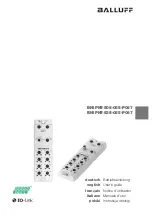
NI 9216/9226 Calibration Procedure
|
© National Instruments
|
3
Test Equipment
Table 1 lists the equipment recommended for the performance verification and adjustment
procedures. If the recommended equipment is not available, select a substitute using the
requirements listed in Table 1.
Test Conditions
The following setup and environmental conditions are required to ensure the NI 9216/9226
meets published specifications.
•
Keep connections to the device as short as possible. Long cables and wires act as antennas,
picking up extra noise that can affect measurements.
•
Verify that all connections to the device are secure.
•
Use shielded copper wire for all cable connections to the device. Use twisted-pairs wire to
eliminate noise and thermal offsets.
•
Maintain an ambient temperature of 20 °C to 28 °C.
•
Keep relative humidity below 80%.
•
Allow a warm-up time of at least 10 minutes to ensure that the NI 9216/9226 measurement
circuitry is at a stable operating temperature.
Initial Setup
Complete the following steps to set up the NI 9216/9226.
1.
Install NI-DAQmx.
2.
Make sure the cDAQ-9178 power source is not connected to the chassis.
3.
Connect the cDAQ-9178 chassis to the system safety ground.
a.
Attach a ring lug to a 14 AWG (1.6 mm) wire.
b.
Connect the ring lug to the ground terminal on the side of the cDAQ-9178 chassis
using the ground screw.
c.
Attach the other end of the wire to the system safety ground.
4.
Install the module in slot 8 of the cDAQ-9178 chassis. Leave slots 1 through 7 of the
cDAQ-9178 chassis empty.
5.
Connect the cDAQ-9178 chassis to your host computer.
Table 1.
Recommended Equipment
Equipment
Recommended
Models
Requirements
Calibrator
Fluke 5522A
Use a high-precision resistance source with gain
accuracy ≤40 ppm and offset error ≤2 m
Ω
for the
NI 9216 and offset error ≤20 m
Ω
for the NI 9226.
Chassis
cDAQ-9178
—


























